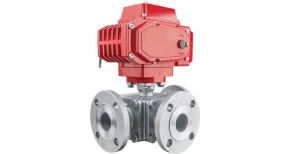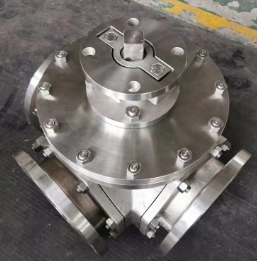How to Install a Stainless Steel Ball Valve: A Step-by-Step Guide
Understanding the Basics of Stainless Steel Ball Valves
Stainless steel ball valves are widely used in many industries to help people solve problems more efficiently. These constructions are able to provide a bubble-tight shutoff offering low operating torsion in various environments.
Components of a Stainless Steel Ball Valve
Body
The body of the valve is typically made from stainless steel, offering high strength and corrosion resistance. It houses all the internal components and provides structural integrity.
Ball
Because the ball is a key part of media flow through this valve. It has a hole or port that is in line with the pipeline when it is open (allowing flow) and is perpendicular to the flow when it is closed (stopping flow) rotating a quarter turn.
Stem
The stem connects the ball to the actuator or handle, transmitting motion to open or close the valve. It is designed to prevent blowouts under pressure, ensuring safety and reliability.
Seat
The seat provides a seal between the ball and the body, ensuring bubble-tight shutoff. Resilient seat materials ensure bi-directional sealing, featuring relief slots for pressure relief in upset situations.
Types and Applications of Stainless Steel Ball Valves
Two-Piece Design
Two-piece ball valves consist of two separate pieces that hold the ball in place. They are commonly used for on/off service and offer easy maintenance due to their simple construction.
Three-Piece Design
Three-piece designs incorporate an independent packing gland that allows for adjustment without removing any mounting hardware. The seal design utilizes a self-adjusting live load packing to provide maintenance-free operation and extended cycle life.
Full Port vs. Reduced Port
|
Feature |
Full Port |
Reduced Port |
|
Flow Capacity |
Maximum flow capacity |
Reduced flow capacity |
|
Pressure Drop |
Minimal pressure drop |
Higher pressure drop |
|
Application |
Suitable for applications requiring full flow |
Suitable for applications where reduced flow is acceptable |
Preparing for Installation
Before installing a stainless steel ball valve, proper preparation is crucial to ensure a successful installation process.
Tools and Equipment Required
Wrenches and Screwdrivers
Essential tools such as wrenches and screwdrivers are needed for assembling and securing components during installation.
Thread Sealant or Teflon Tape
Used to prevent leakage at threaded connections, ensuring a secure seal.
Safety Precautions and Best Practices
Personal Protective Equipment (PPE)
Wearing appropriate PPE such as gloves and goggles is essential to protect against potential hazards during installation.
Workspace Preparation
Ensure that the workspace is clean, organized, and free from any obstructions that could interfere with installation procedures.
Step-by-Step Installation Process
Removing the Old Valve (if applicable)
Begin by safely removing any existing valve from the pipeline. Ensure all pressure is released before proceeding with removal.
Positioning the New Stainless Steel Ball Valve
Carefully position the new stainless steel ball valve in alignment with the pipe ends. Ensure that all connections are properly oriented for optimal function.
Securing the Valve in Place
Aligning the Valve with Pipe Ends
Align the valve ports with corresponding pipe ends to ensure correct flow direction. Proper alignment prevents leaks and ensures efficient operation.
Tightening Bolts and Nuts
Securely tighten all bolts and nuts using appropriate tools. Ensure even distribution of force across connections to maintain integrity under operational pressures.
By following these detailed steps, professionals can install stainless steel ball valves effectively while ensuring long-term reliability and performance in their respective applications.
Testing and Ensuring Proper Functionality
After installation, it is imperative to test the stainless steel ball valve to ensure it functions correctly and safely.
Leak Testing Procedures
Perform a leak test to ensure that the valve and any connections are intact. This includes using system pressure and checking for leakage around the valve body and the valve stem and seat. Use proper leak detection tools or electronic leak detectors to check for leaks. Tighten connections or replace faulty gear to seal any leaks out of your system.
Adjustments for Optimal Performance
Additional modifications might be required for the valve to be perfect. Please check whether the actuator or handle feels good without requiring excess force to activate it. If necessary, adjust the packing gland until it is tight enough to seal but loose enough to turn. Make sure the valve opens and closes without jam.
Maintenance Tips for Longevity
Regular Inspection Intervals
Set periodic inspections depending on the valve’s working environment to keep the valve operating correctly. More regular inspections are recommended in high-use or corrosive conditions. During these inspections, look for seal and seat wear, and corrosion on the body or stem, and that all moving parts operate smoothly.
Cleaning and Lubrication Techniques
Regular cleaning is important in stopping the formation of scales that may prevent a valve from working. Clean external surfaces using appropriate solvents and strip deposits from internal components. Lubricate the stem and other moving parts with palatal lubricants compatible with stainless steel bodies to minimize friction and wear.
Exploring Miwival’s Range of Products
Miwival offers a diverse range of high-quality valves designed for various industrial applications.
Benefits of Choosing Miwival
Miwival are built to last; exceptionally rugged valve designs provide bubble-tight shutoff and low operating torque. Advanced materials such as SMO254 and DSS 2205 are used for corrosion resistance and high durability in diverse conditions.
Overview of Other Miwival Products
Industrial Plug Valves
Miwival’s industrial plug valves provide reliable flow control with minimal pressure drop. These valves are ideal for applications requiring quick shutoff capabilities.
High-Performance Butterfly Valves
High-performance butterfly valves from Miwival offer precise control over flow rates with their innovative design. They are suitable for high-pressure systems where efficiency and reliability are paramount.
By adhering to these guidelines and using Miwival’s complete range of products, ensuring proper installation, operation, and maintenance of stainless steel ball valves in your system can be a simple exercise. With these recommendations and Miwival’s complete range of products — you can achieve a safe and effective installation, use, and maintenance of stainless steel ball valves in the system.







